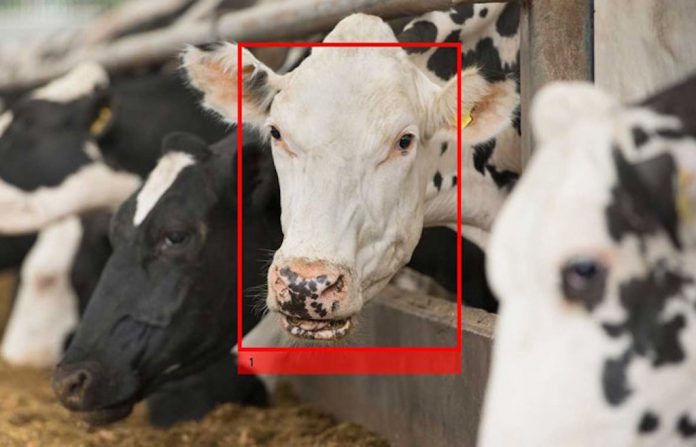By Susan Crowell / Farm and Dairy Editor
I first heard about facial recognition research in the barn last May while I was at the One: Alltech Ideas Conference in Lexington, Kentucky. After two days of mind-boggling ideas and research and science, I was nearly brain dead, but this research presentation was something that stuck with me, and was the first thing I told my coworkers about when I came back to the office.
By using this visual imaging analysis, you can ID where, how and what an individual cow eats. You can see the bossy ones, and how cows react to their environment.
You can pool data by barns, by how long each cow drinks, feeds or milks. And since cows can train themselves (there’s always that one outlier, though, right?), you can change how cows eat, where they eat and how long they spend eating.
And you might discover that the way one TMR mixer driver feeds doesn’t yield the same response as another TMR mixer driver in the same barn on a different day. How feed is distributed and how well the mixer mixes, also makes a difference in feed consumption, as does the feed formulation itself.
Science fiction has become science fact.
If you’re truly a cowman, you know your cows and spend time out in the barn, watching and looking at your cows. You don’t need no stinkin’ video or facial recognition. But you can’t always be out in the barn, amirite?
Jay Johnston, CEO of Fermentrics Technologies, was one of the presenters last May. “Whatever the cows do, they do, and you design the ration accordingly,” he says.
What if you could be alerted to a particular cow’s health signs, like head pressing or teeth grinding? Or early signs of lameness? What if you could use visual recognition to score, or at least alert you to, body condition? Why aren’t they eating? (And that’s kind of a big deal: A drop in dry matter intake on a single day will lower milk production for the following two days.)
Just like the industrial revolution forever changed the world, we’re now embarking on a digital revolution filled with data and information, says David Hunt, CEO and co-founder of Cainthus, a Dublin-based technology company that has pioneered this concept in agriculture.
Cainthus’ imaging technology can identify individual cows by their features in several seconds to memorize a cow’s unique identity, recording individual pattern and movements. Then, using an artificial intelligence-driven mathematical algorithm (that’s a mouthful), that imagery is converted into feed and water intake analysis, behavioral tracking and health alerts that can be sent directly to his farmer on a smartphone.
Basically, we’re tracking what cows do and figuring out why they do it.
Science fiction has become science fact, Hunt likes to say.
I hadn’t thought of last May’s presentation until last week, when I received separate emails from two companies, both talking about visual recognition use on the farm. In fact, the one announced Cargill has invested in Cainthus, and now owns a minority stake. The future is now.
And back in December, Poultry World reported a Chinese tech company has developed facial recognition to track premium organically farmed chicken. It monitors the chickens in real-time through GPS tracking devices on the birds’ legs — because today’s consumer wants to know EXACTLY where his food comes from, and what that bird ate.
The company currently has 100,000 birds fitted, but has plans to use it on 23 million birds over the next three years, Poultry World reports from a South China Morning Post article.
Artificial intelligence and visual recognition are just two breakthroughs from other industries that will revolutionize agriculture. We probably can’t grasp exactly how, but we didn’t believe artificial insemination or auto-steering would be a “thing,” either.













